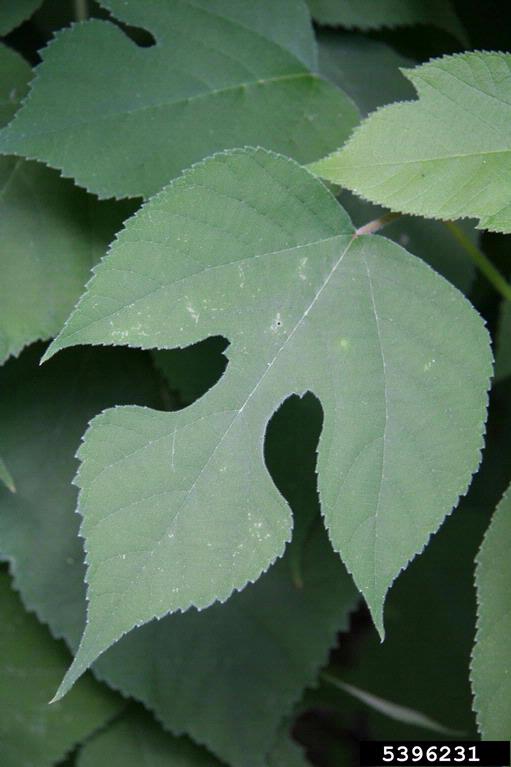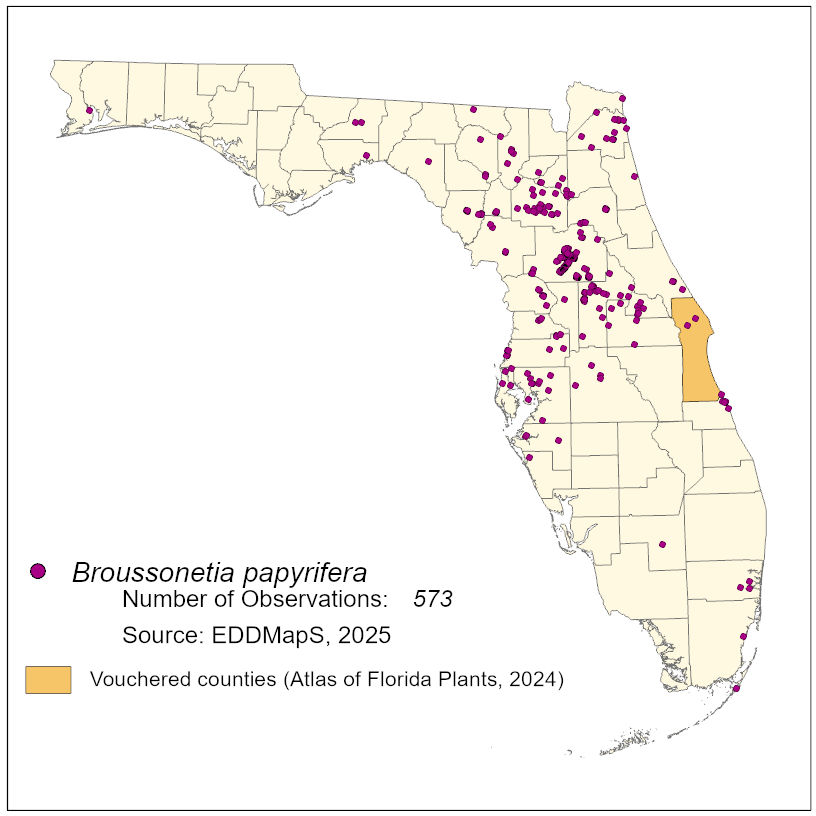Common Name: paper mulberry
Family: Moraceae
Common Synonyms: Morus papyrifera
USDA Hardiness Zone: 7a-11
Growth Habit: Tree
Origin: Japan and Taiwan
FISC Category: 2
FDACS Listed Noxious Weed: No
Introduction Date: Earliest Florida herbarium specimen from 1929
IFAS Assessment:

Deciduous large thicket-forming shrub or tree to 15 m with milky sap. Young twigs pubescent. Leaves alternate, simple, broadly oval and often deeply 3-5 lobed, pubescent on lower surface and rough on upper surface. Leaf margins serrate. Leaves may be clustered at ends of branches and appear whorled. Petioles can be long (up to the length of the leaf). Fruit is a globose to club-shaped syncarp to 2.5 cm in diameter.
Disturbed open areas and habitat edges
Similar to the native red mulberry (Morus rubra), but with pubescent twigs and longer petioles

NA
Invasive Species Management Plans for Florida. 2008. University of Florida, IFAS Extension, Circlular 1529
Species Profiles for Pacific Island Agroforestry: http://www.agroforestry.net/images/pdfs/Broussonetia-papermulb.pdf